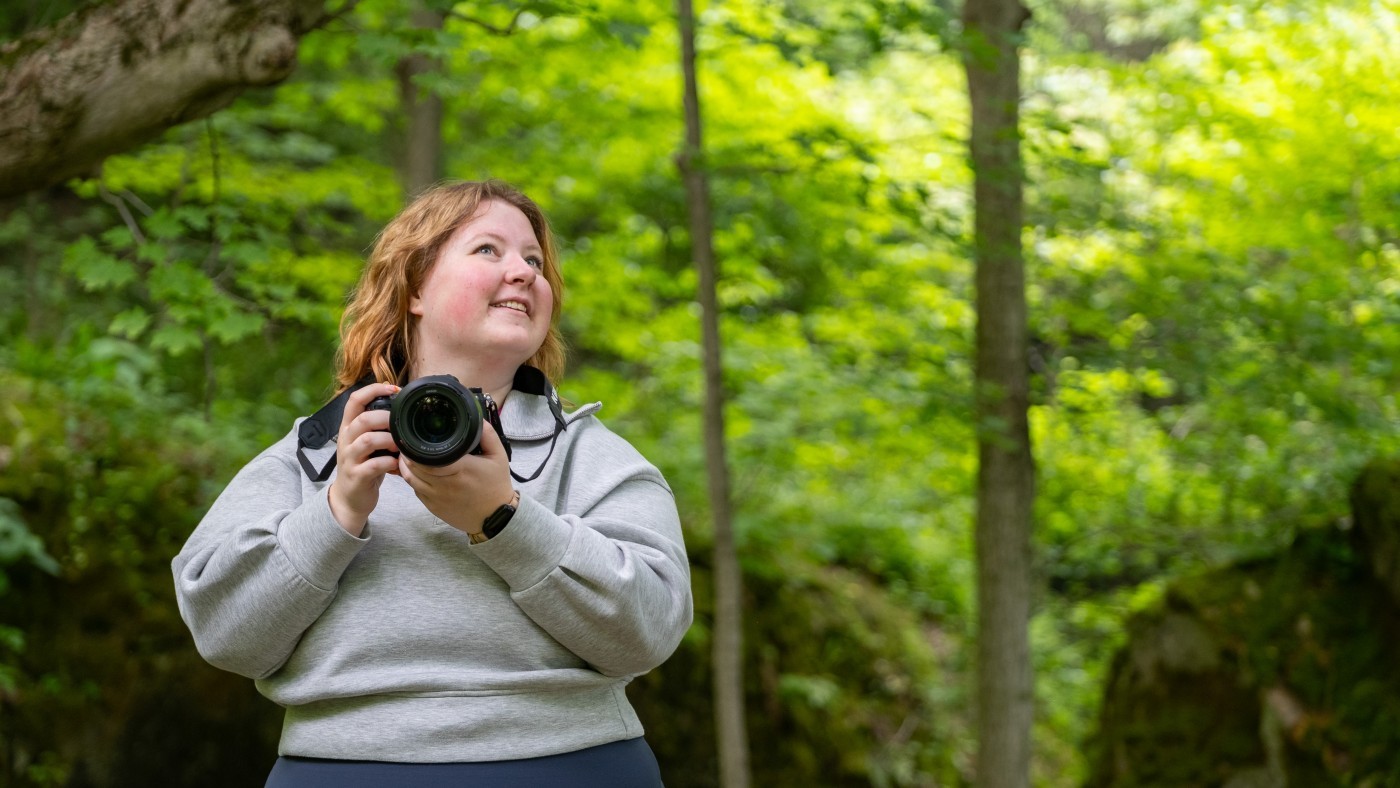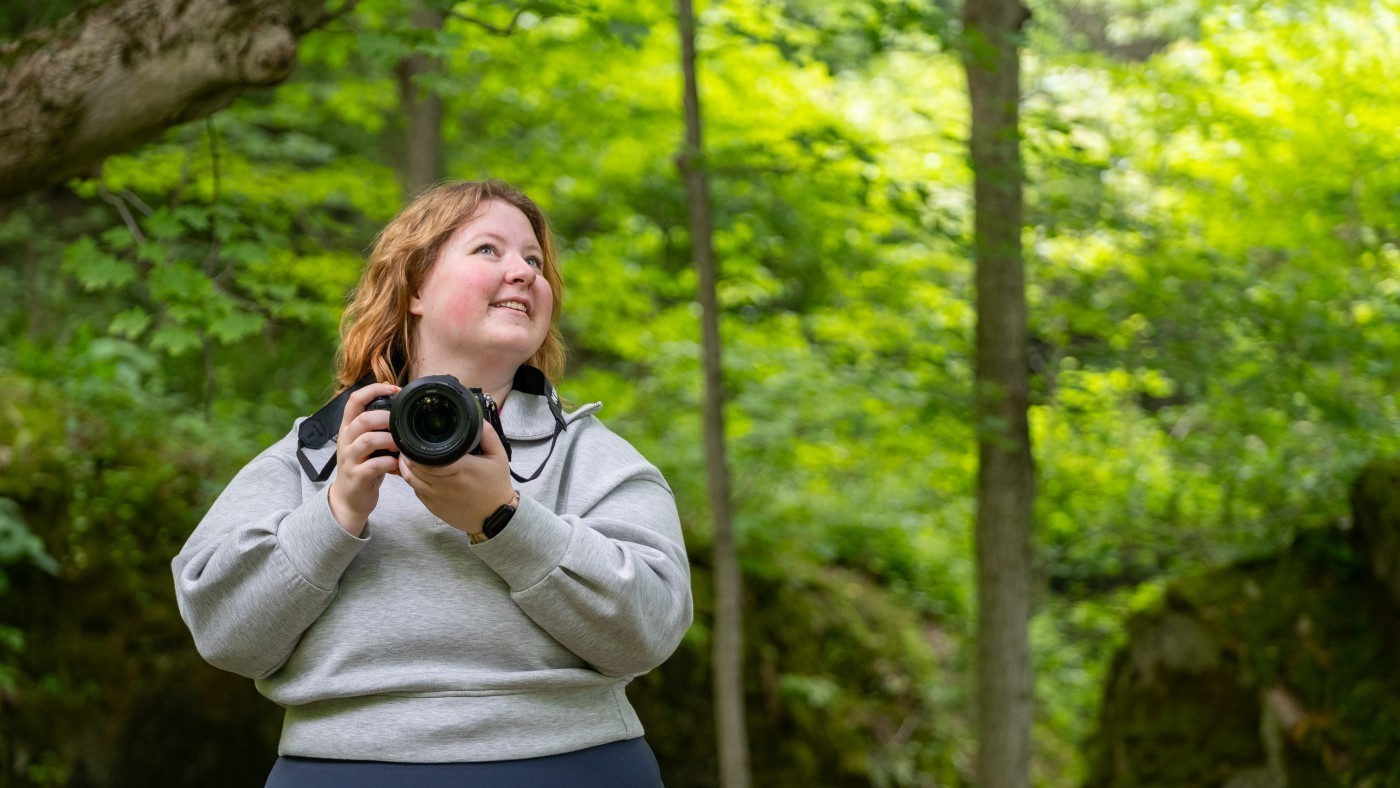Are you a wildlife enthusiast looking to sharpen your photography skills or capture the perfect shot of your favourite local species? We’ve got the guide to some of the top spots in NPCA parks for snapping that perfect wildlife photo. So, grab your camera, pack your patience, and get ready to capture stunning wildlife shots at some of the region’s wildest conservation areas.
Friendly Reminder: Wildlife photography is exciting but always admire from afar. Remember, these parks are their home. Never handle or remove flora and fauna from their habitats.
Get Hawk-Eyed at Beamer Memorial
- Must-Shoot: Migrating hawks and raptors, panoramic Lake Ontario views.
- Best Time: Early morning or late afternoon.
- Suggested Lens: Long telephoto (300mm+) to capture birds in flight with crisp detail.
Perched atop the Niagara Escarpment and part of a UNESCO Biosphere Reserve, Beamer Memorial is the region’s premier spot for hawk lovers, especially during spring’s raptor migration. Since 1975, volunteers at Niagara Peninsula Hawkwatch have counted more than 399,163 hawks, eagles, falcons, and vultures soaring overhead each spring. Raptors commonly spotted include Broad-winged Hawks, Red-tailed Hawks, Ospreys, Bald Eagles, Golden Eagles, and Northern Harriers. Climb the lookout tower for the best vantage point to see these majestic birds riding thermals above panoramic Lake Ontario views. Midday (11 a.m.–2 p.m.) typically offers prime viewing—just be sure your camera is ready!
Creek Along Louth
- Must-Shoot: Forest songbirds, small mammals, and waterfalls.
- Best Time: Early morning.
- Tips: Use a medium-range zoom lens (200–300mm); stay quiet and listen for bird calls.
Located along Sixteen Mile Creek in Lincoln County, the 36-hectare Louth Conservation Area offers a serene, wooded escape rich in wildlife. Wind through escarpment forest trails and tune your ears to the calls of songbirds like the American Goldfinch, Northern Cardinal, Black-capped Chickadee, and Wood Thrush. Along the creek banks, keep an eye out for chipmunks, rabbits, and other small mammals darting through the brush. With two stunning waterfalls along the trail, this hidden gem is just as photogenic as it is serene.
Note: Louth is a passive recreational area. There are no facilities such as washrooms on-site, so please plan accordingly.
Wet & Wild at Wainfleet
- Must-Shoot: Fossils, Shorebirds, Great Blue Herons and Bald Eagles
- Best Time: Dawn or dusk
- Tips: Use a macro lens for fossil close-ups and a telephoto (400mm+) for distant birds.
Once part of a shallow, warm sea more than 400 million years ago, Wainfleet Wetlands is now a haven for wildlife photographers and geology buffs alike. This former limestone quarry offers the best exposed fossil beds in the Niagara Peninsula—trilobites, crinoids, and ancient corals can be spotted embedded in the rock faces and tablelands, making for striking geological close-ups.
Beyond the stone, the wetlands and surrounding prairie, cliffs, and alvars are home to over 50 bird species. Keep your lens ready for birds such as Yellow Warblers, Sandpipers, Great Blue Herons, Egrets, and even Bald Eagles soaring above. Amphibians, reptiles, and small mammals also frequent the area, offering a rich biodiversity that rewards a patient lens.
Capture Niagara’s Wild Side
Ready to snap your next favourite wildlife photo? With a little patience and respect for nature, the Niagara Peninsula's Conservation areas provide endless opportunities for stunning wildlife photography.
Discover more NPCA conservation areas and plan your photography adventure here.

